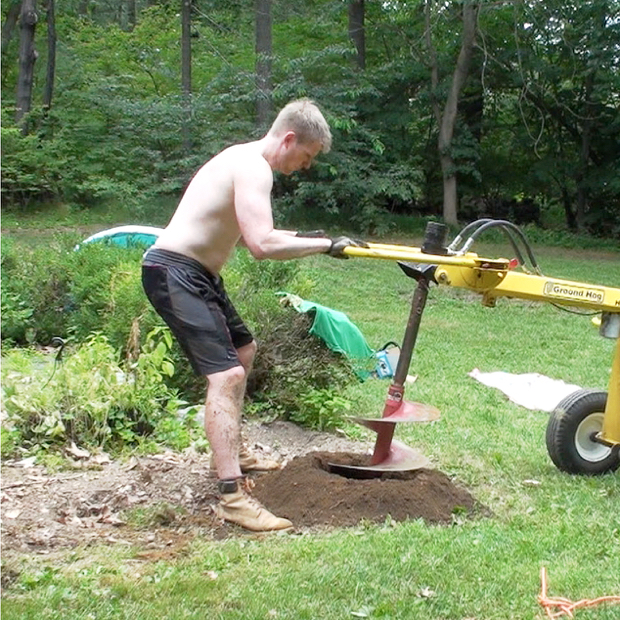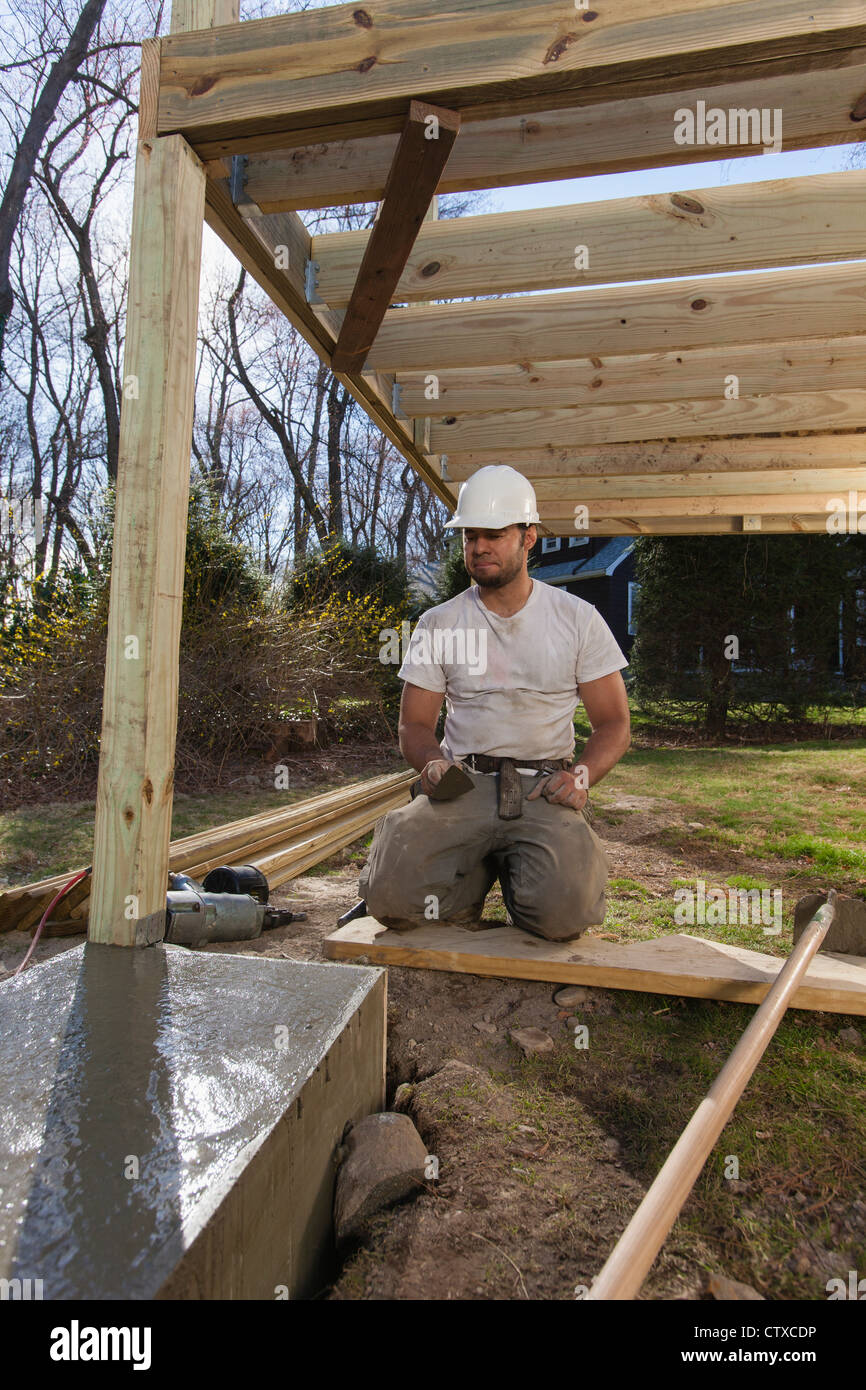Picking the Right Deck Footings for Security and Durability
When it concerns building a deck, one of the most vital decisions you will make is choosing the ideal footings for security and longevity. The longevity and safety and security of your deck depend greatly on the sort of footings you select, as they supply the essential support and stability to withstand the test of time. With a myriad of options offered, it can be overwhelming to establish which grounds are best matched for your details demands. In this discussion, we will discover the different sorts of deck footings, think about the essential elements to weigh when making a choice, and explore the advantages and disadvantages of different options. By the end, you will have a clearer understanding of the options available and be far better equipped to make an informed choice for your deck project.
Sorts Of Deck Footings
These footings consist of a cylindrical opening loaded with concrete, which supplies a solid structure for the deck posts. Concrete pier grounds are reasonably easy to install and offer superb security, making them a preferred selection for many deck jobs.
These footings are mounted by screwing them right into the ground, which creates a protected structure for the deck. They likewise allow for easy modification and progressing of the deck if required.
Conversely, some contractors go with precast concrete grounds. These grounds are constructed from sturdy concrete and be available in numerous sizes and shapes to accommodate various deck designs. Precast concrete grounds are practical to install and offer a secure base for the deck framework.
Lastly, one more option is the post-in-anchor footing system. This sort of footing includes driving a steel anchor right into the ground and attaching it to the deck post. It uses flexibility in terms of positioning the deck blog posts and is appropriate for decks with light-weight frameworks.
When choosing the appropriate type of deck footing, it is important to take into consideration variables such as dirt conditions, deck load, and neighborhood building ordinance (Deck Footings). Consulting with an expert contractor or structural engineer can aid ensure the suitable footing is chosen for a risk-free and steady deck
Factors to Think About When Picking Footings
When picking the suitable grounds for a deck, it is critical to very carefully consider various variables such as soil conditions, deck tons, and adherence to local building codes. These aspects play a considerable duty in making sure the stability and durability of the deck structure.
Among the key factors to consider is the dirt problems. The kind of soil on which the deck will be constructed figures out the kind of footings required. For circumstances, decks improved sandy or loose dirts may need deeper footings to give ample assistance and stop settling. On the various other hand, decks improved clay or expansive dirts may call for footings that can accommodate the soil's propensity to broaden and agreement.
One more crucial variable is the deck tons. The weight of the deck, including the materials used and any kind of prospective live lots such as furniture or gatherings, should be taken right into account when choosing footings. The grounds have to be made to birth the weight of the deck and distribute it uniformly to avoid any kind of structural issues or failings.
Last but not least, adherence to neighborhood building regulations is paramount. Building regulations vary from region to area, and it is vital to adhere to the particular requirements set by the local authorities. Deck Footings. These codes make certain that the deck is constructed safely and fulfills the required standards for architectural integrity and load-bearing capacity
Concrete Footings: Cons and pros

Concrete footings provide a number of benefits and disadvantages when used as the structure for a deck. On the favorable side, concrete grounds supply outstanding stability and toughness.
One more benefit of concrete footings is their versatility. They can be poured into various sizes and shapes to fit different deck styles and setups. Concrete check that grounds can be tailored to fit the details requirements and demands of the deck structure.
However, there are also some disadvantages to making use of concrete grounds. One major drawback is the expense and labor involved in their setup. Concrete footings require excavation and often require the assistance of heavy machinery. This can enhance the overall expense browse around this web-site of the deck job and might call for specialist help.

Helical Piers Vs. Sonotubes: Which Is Much better?
In considering the structure choices for a deck, the contrast between helical piers and sonotubes is critical in identifying the superior option. They are turned into the ground using hydraulic equipment, supplying a resilient and secure foundation for the deck.
When it concerns stability and durability, helical piers have the upper hand. The helical plates on the piers produce a strong grasp with the soil, shifting or preventing any kind of movement of the deck. This is especially helpful in locations with unstable or shifting soil conditions. Sonotubes, on the other hand, count exclusively on the concrete filling up for security, which may not use the same level of strength and resistance.
In terms of installation, helical piers are fairly easier and faster to install compared to sonotubes. The hydraulic equipment utilized to twist the piers right into the ground ensures a efficient and fast process. Sonotubes, on the various other hand, require excavating openings and putting concrete, which can be labor-intensive and lengthy.
Additionally, helical piers are a more flexible alternative. If required, they can be used in different soil problems and can be readjusted or reinforced. Sonotubes, on the other hand, may require extra support, such as rebar, in specific soil problems or areas with high load needs.
Choosing the Right Footings for Your Deck's Measurements
For optimum structural integrity, it is necessary to carefully select the proper grounds that straighten with the measurements of your deck. The dimensions of your deck, including its size, elevation, and size, play a considerable role in figuring out the type and dimension of footings needed.
When choosing footings for your deck, it is essential to take into pop over to this site consideration the load-bearing capability of the dirt. The weight of the deck, combined with the weight of any type of furnishings or people on it, puts in a considerable pressure on the grounds (Deck Footings). It is vital to pick footings that can properly support this weight without sinking or shifting over time.
The shapes and size of the footings ought to additionally be considered. Larger decks with better measurements call for bigger grounds to provide sufficient security and support. The shape of the grounds, whether they are square or round, depends on the style and format of the deck. Additionally, the deepness at which the footings are set up ought to be identified based on the frost line in your area to protect against any kind of heaving or changing due to freezing temperatures.
Final Thought
In conclusion, selecting the ideal deck grounds is vital for guaranteeing security and durability. Variables such as the type of footings, the deck's dimensions, and the advantages and disadvantages of various alternatives must be taken into consideration. Concrete grounds offer toughness and durability, but may be extra lengthy and costly to install. Helical piers and sonotubes have their very own advantages and negative aspects. Eventually, choosing the suitable grounds for your deck's certain requirements is vital for a resilient and effective structure.
These grounds consist of a cylindrical opening filled up with concrete, which offers a strong structure for the deck articles. Concrete pier grounds are relatively simple to install and supply exceptional security, making them a popular selection for many deck tasks.
Precast concrete grounds are convenient to install and provide a secure base for the deck framework.
It uses adaptability in terms of placing the deck articles and is appropriate for decks with light-weight frameworks.
Concrete footings use numerous advantages and disadvantages when used as the structure for a deck.